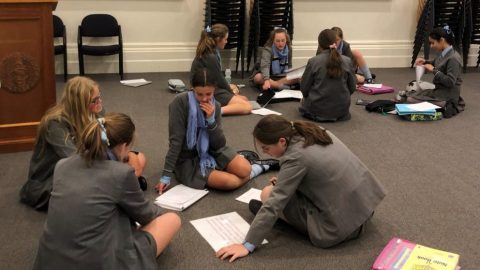English Faculty Update: Year 9 Creating Links Between Texts and Students

Recently, somebody mentioned how the English classroom gave the exciting opportunity for varied and stimulating discussion. This is true; in English our text choices often lead to questions about the world we live in and the human experience. For a student to immerse herself fully into the study of a text, it needs to have relevance. At a time in our society where there is uncertainty and even fear, and role models are chosen simply because they are in the media, our text studies not only allow the growth and consolidation of skills, the chosen novels can help young people make sense of real life.
In Year 9 English, we began our Term 3 novel, Harper Lee’s To Kill a Mockingbird, with critical reading which spanned the 20th and 21st centuries: Abraham Lincoln’s Gettysburg Address, a 1940s Langston Hughes poem about African American WW2 veterans, a 1980s article detailing Aerosmith and Run DMC’s ground-breaking new sound, and a 2019 African American man’s experience in Mississippi. This pre-reading sparked thought provoking conversations and enabled the students to lead rigorous question and answer sessions, setting the scene for a deeper understanding of the events detailed in the novel.
To apply this contextual knowledge, gain a thorough comprehension of the novel and to link their learning to their experiences in our society, the Year 9s compared the themes and characters of To Kill A Mockingbird with Tate Taylor’s film, The Help. What wonderful texts through which to view our present society through as the girls learn about the devastation that is wrought from prejudice and the difficulties and rewards of acting with courage. Both Lee and Taylor opine that courage is intertwined with morality; that courage “is not just about being brave, it is daring to do right”; it is those who face their challenges knowing “[they] are licked…but… begin anyway…no matter what”, who are to be admired. When learning about role models from these texts, it is hoped that the students are able to look to those who embody positive qualities, who are good people, not those who are simply prolific in the media.
As teachers, we are heartened to see students research, synthesise and apply their knowledge to their discussions and writing on the text. In learning about prejudice and fear of those who are different, Lee and Taylor both scrutinise the evil that exists in society, but the message that they leave with us is a message that we all need to remember: that more often than not, terrible deeds are tempered by goodness.


